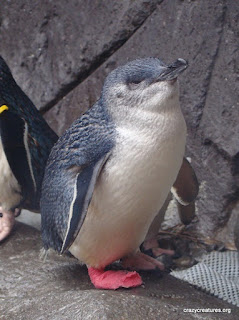Penguin Wing Evolution Story Fails
Time and time again, proponents of descent with modifications are presented with fossils of creatures that show no appreciable change between then and now. Some evolutionists admit that they walk by by faith, not by sight. The thought of admitting there is a Creator makes them squirm.
There are seventeen accepted species of penguins. Despite common ideas, they are not confined to Antarctica, but are found in diverse places such as southern Africa, the Galápagos, and more. They vary in size with the smallest being the blue (little, fairy) penguin at thirteen inches (33 cm).
.jpg) |
| Blue penguin, Flickr / Laurens (CC BY-ND 2.0) |
For decades, conventional evolutionary speculation has argued that penguins have vestigial bird wings which are now useless for flight. The Darwinian belief is that penguins’ wing-like limbs are evolutionary remnants of once-functional wings that their ancestors used for powered flight millions of years ago. As penguins “adapted to an aquatic lifestyle, their wings gradually became better suited for swimming than flying.” The evolutionary view is that some birds have turned into very different animals which are no longer aerial but rather terrestrial and aquatic.Penguins are classified as flightless birds because evolutionists believe that they evolved from some ancient avian ancestor, as also did ostriches, emus, kiwis and other animals that allegedly had lost the ability to fly long ago.
To read the rest, use your flippers to click on "Penguins Were Created to Swim."